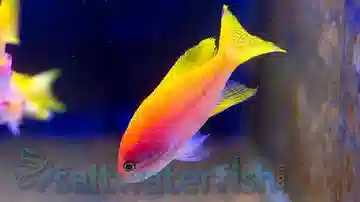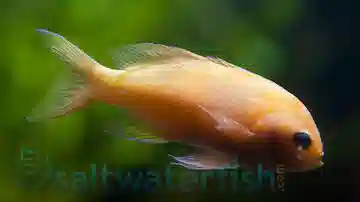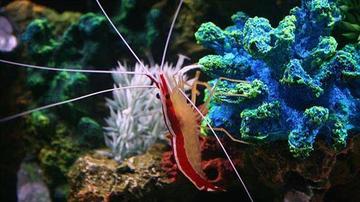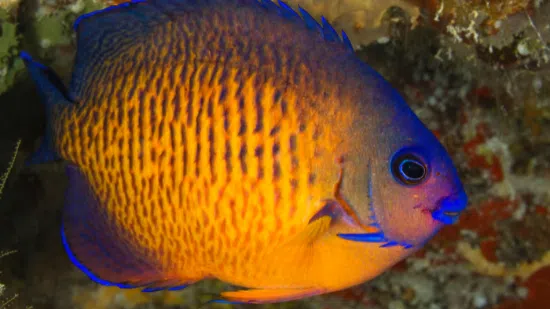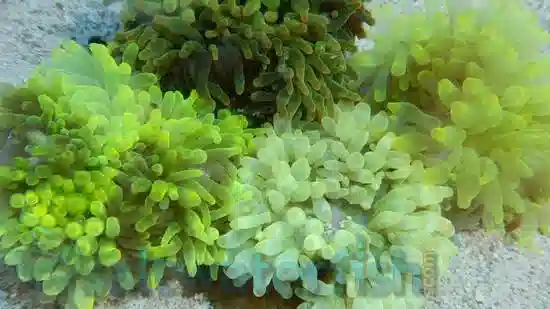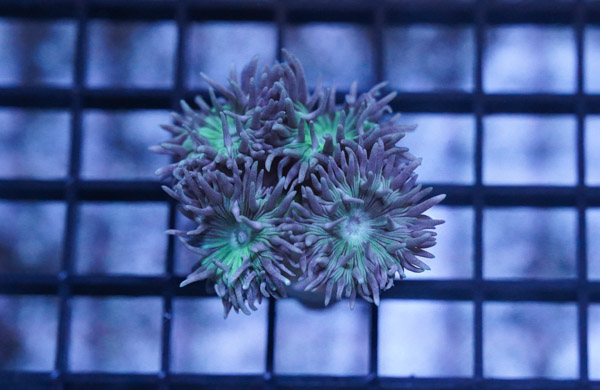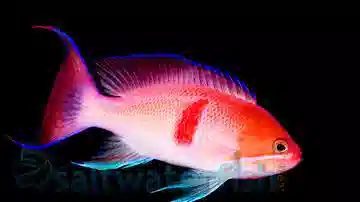Red Belted Anthias
Pseudanthis Rybrizonatus
(2 Reviews)
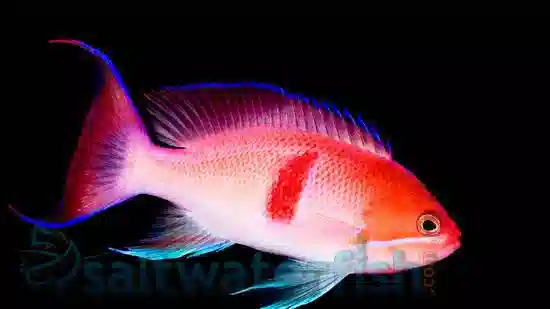
Red Belted Anthias
Pseudanthis Rybrizonatus
(2 Reviews)
{{ item.name }}
Size: {{ item.extra_field_3 }}
${{ getFormattedPrice(item.saleprice) }} ${{ getFormattedPrice(item.price) }}
Free Shipping
With
$199.00
or more in Marine Life.
More details...
Care Facts
| Care Level: | Moderate |
|---|---|
| Temperament: | Peaceful |
| Diet: | Carnivore |
| Reef Safe: | Yes |
| Minimum Tank Size: | 70 gallons |
| Max Size: | 5 inches |
The Red Belted Anthias (Pseudanthias rybizonatus): A Detailed Care Guide
The Red Belted Anthias (Pseudanthias rybizonatus) is a fascinating marine fish species that can be valuable to your saltwater marine aquarium. In this comprehensive product description, we will provide you with essential information on this species to help you decide to keep them in your aquarium.
Habitat: Red Belted Anthias From the Western Pacific
Red Belted Anthias are primarily found in the Western Pacific Ocean, specifically in the waters around Indonesia, Papua New Guinea, and the Philippines. They inhabit coral-rich areas, particularly in the shallower reef zones.
Reef Compatibility of the Red Belted Anthias: Adding Vibrancy to Your Coral Landscape
These Anthias are considered reef-safe, meaning they are unlikely to harm coral and other invertebrates in your aquarium. They tend to swim around the reef, adding a vibrant and dynamic element to the coral landscape.
Size and Lifespan of the Red Belted Anthias: Small Marvels of the Ocean
Red Belted Anthias are relatively small fish, with adult individuals typically reaching about 3 to 4 inches (7.5 to 10 cm) in length. In captivity, they can have a lifespan of up to 5 years or more with proper care.
Diet of the Red Belted Anthias in Captivity: A Varied Menu for Health and Coloration
Red Belted Anthias require a varied diet to thrive. They are omnivorous and should be fed a mix of high-quality flake or pellet food, frozen food such as Mysis shrimp, and live or frozen brine shrimp. Providing a diverse diet helps ensure their health and vibrant coloration.
Aquaculture Availability of the Red Belted Anthias: Seeking the Red Belted Anthias
Red Belted Anthias are not commonly available through aquaculture. However, advancements in marine fish breeding techniques may have increased availability since then. It's advisable to check with reputable saltwater aquarium suppliers such as saltwaterfish.com for the most current information on their availability.
Compatibility of the Red Belted Anthias with Other Fish and Invertebrates
Red Belted Anthias are generally peaceful fish but can be territorial towards their own kind. It's best to keep them in small groups with a single male and several females to reduce aggression. They are compatible with other marine fish and invertebrates with similar tank requirements.
Sexual Dimorphism of the Red Belted Anthias: Vibrant Males and Paler Females
Red Belted Anthias exhibit sexual dimorphism, meaning males and females have distinct differences in appearance. Males typically have more vibrant colors, including the characteristic red belt across their body, while females are generally paler.
Juvenile to Adult Coloration Changes in the Red Belted Anthias: A Stunning Transformation
Juvenile Red Belted Anthias may have a less pronounced red belt than adults. The red belt becomes more prominent as they mature, making them a stunning addition to your aquarium.
Temperament of the Red Belted Anthias: Peaceful Nature with Territorial Traits
These Anthias are known for their peaceful temperament, making them suitable for community aquariums. However, males may display territorial behavior towards other males, so it's essential to maintain a balanced male-to-female ratio.
Tank Requirements of the Red Belted Anthias: Creating the Ideal Habitat
To provide the best care for your Red Belted Anthias, you will need an aquarium with a minimum size of 30 gallons (113 liters). Maintaining a stable environment is crucial for their well-being. Here are the water conditions they require:
- pH: Maintain a pH level between 8.1 and 8.4.
- Salinity: Keep the salinity level within the range of 1.020 to 1.025.
- Water Temperature: Maintain a temperature between 74°F to 78°F (23°C to 26°C).
- Water Flow: Red Belted Anthias prefer moderate water flow within the aquarium to mimic their natural reef habitat.
Other Common Names: Red Stripe Anthias and Redbar Anthias
Red Belted Anthias are known by a few familiar names, including Red Stripe Anthias and Redbar Anthias.
Five Compatible Tank Mates: Harmony in Diversity
When considering tank mates for Red Belted Anthias, here are five compatible species to consider:
- Yellowtail Damselfish (Chrysiptera parasema): These colorful damselfish are an excellent match for the peaceful nature of Red Belted Anthias.
- Firefish Goby (Nemateleotris magnifica): Firefish gobies add a touch of elegance to your aquarium and are generally compatible with Anthias.
- Royal Gramma (Gramma loreto): The vibrant colors of the Royal Gramma make them an eye-catching companion for Red Belted Anthias.
- Six-Line Wrasse (Pseudocheilinus hexataenia): Six-Line Wrasses are active swimmers and can coexist peacefully with Anthias.
- Banggai Cardinalfish (Pterapogon kauderni): These unique-looking cardinalfish can share a tank with Anthias without significant issues.
Why Choose Red Belted Anthias from Saltwaterfish.com: Trust in Excellence
Saltwaterfish.com is committed to providing high-quality marine fish to hobbyists. When you choose to purchase Red Belted Anthias from Saltwaterfish.com, you can expect:
- Healthy Specimens: Saltwaterfish.com takes pride in offering healthy and well-cared-for fish to ensure their successful acclimation to your aquarium.
- Expert Advice: Their team of experts can provide guidance and recommendations to help you create the ideal habitat for your Red Belted Anthias.
- Variety of Options: You may find a selection of Red Belted Anthias with different sizes and colors to suit your preferences.
- Shipping Convenience: Saltwaterfish.com can ship fish directly to your doorstep, ensuring a seamless and stress-free process.
In conclusion, the Red Belted Anthias is a stunning addition to any saltwater marine aquarium, known for its peaceful nature and striking appearance. To provide them with a suitable environment, ensure proper tank size and water conditions, and offer a varied diet. When considering purchasing Red Belted Anthias, Saltwaterfish.com is a reputable source that provides quality specimens and expert support to help you succeed in keeping these beautiful fish in your home aquarium.
Been trying to get these in a while. All doing well.
Reviewed by: Kenneth Goldsmith on Jan. 16, 2024
I bought this Red Belted Anthias here and to show you how hardy this guy is, he was the most active of 5 fish I had delivered when outside temp in MN was 21 degree out and bag water was at 68 degrees. All survived after 2 1/2 hr slow drip acclimation. He is a colorful little guy to watch darting around the tank. He is constantly on the move searching for food or detritus on the bottom as well as on reef rock. Likes to dart in and out of rock. He is getting much better at snagging Mysis shrimp I drop in before the other 6 fish hog it all, especially my Hamlet Indigo who gobbles everything that moves. A joy to watch.
Reviewed by: Philip Brock on Sept. 11, 2021



